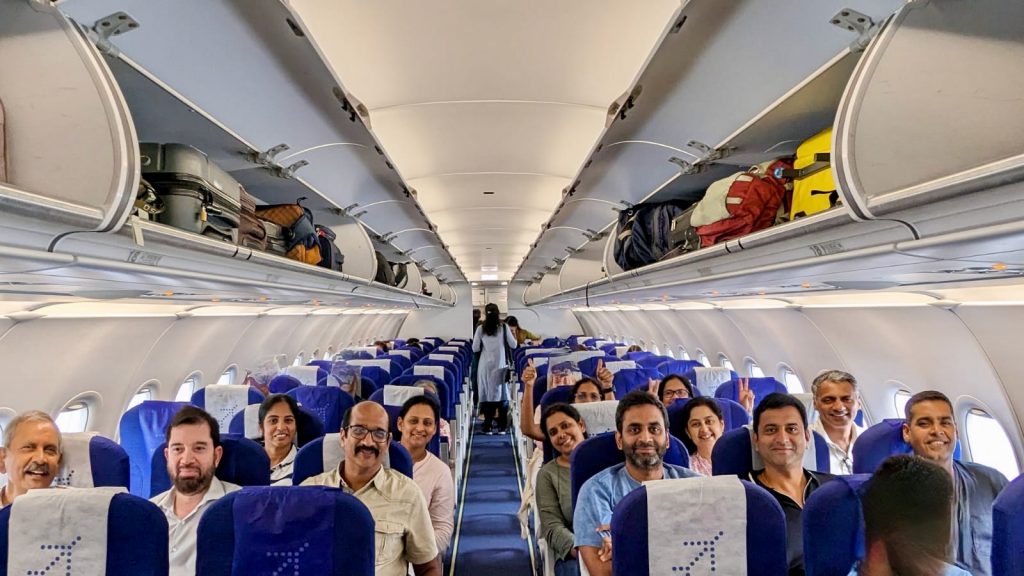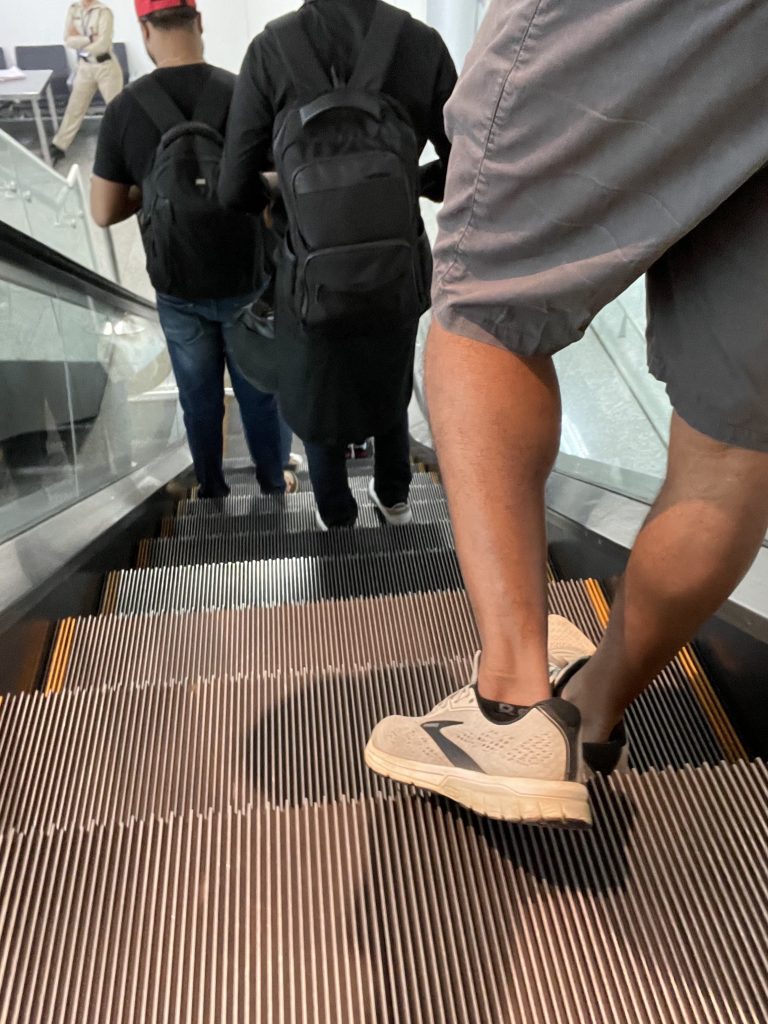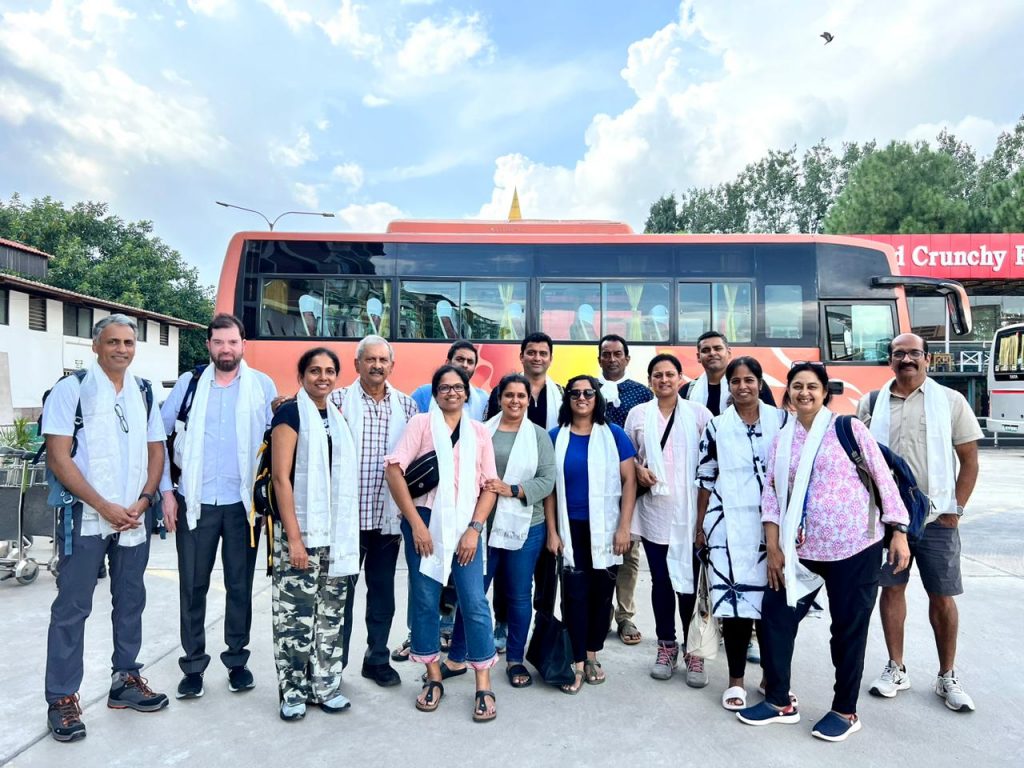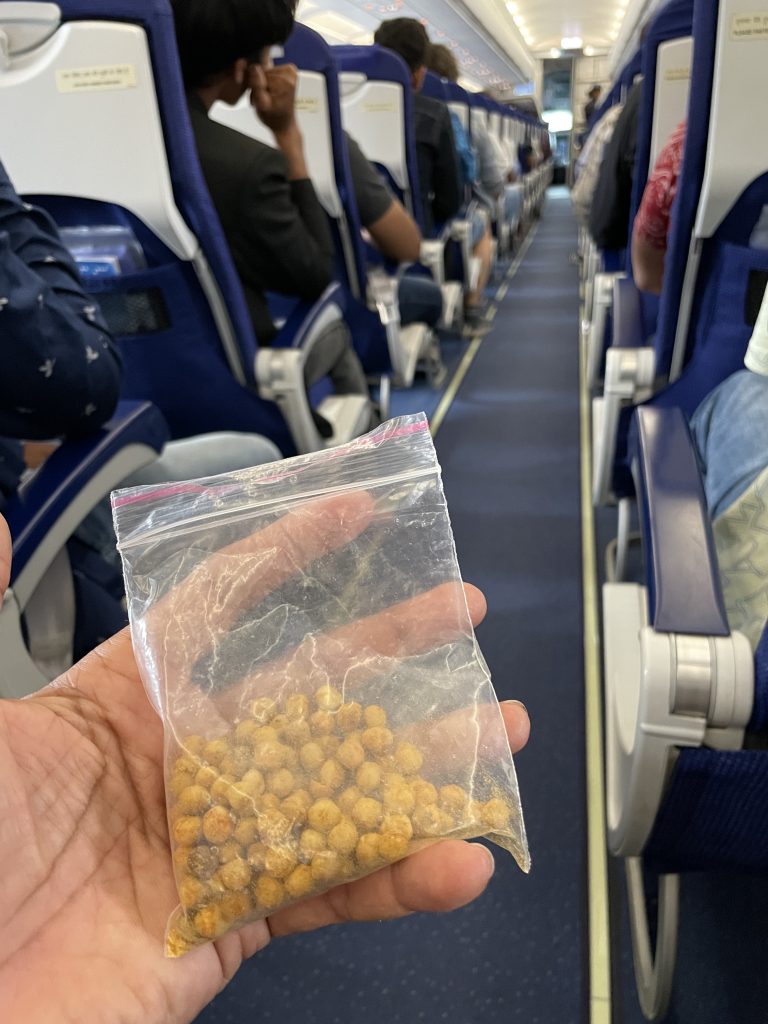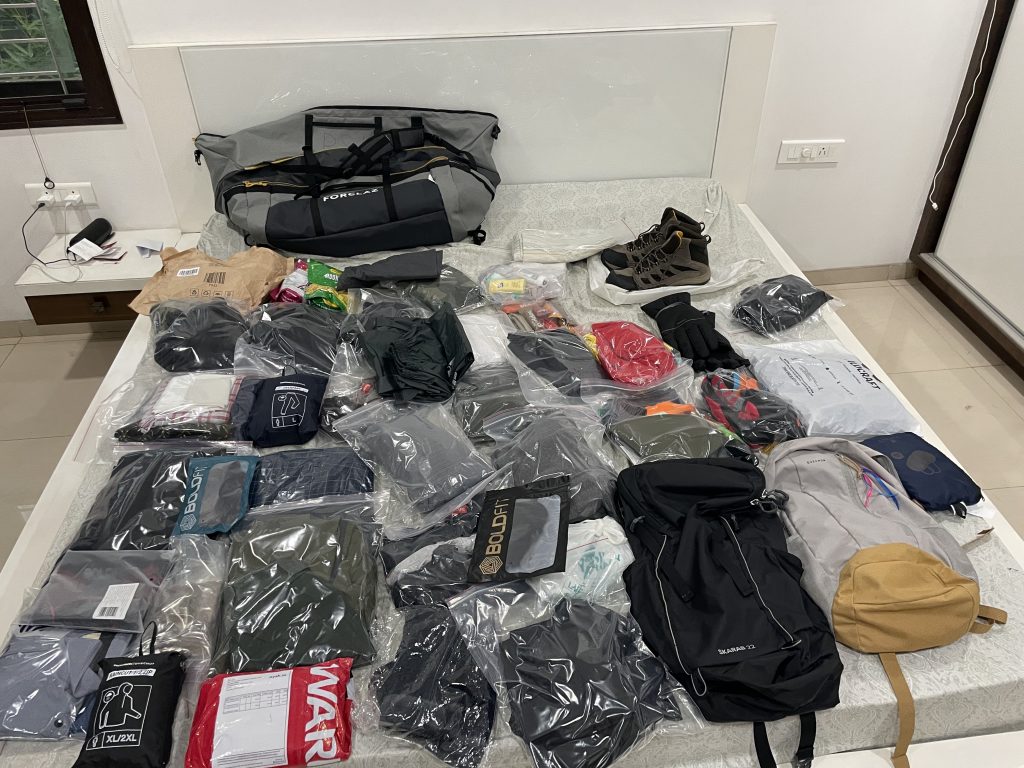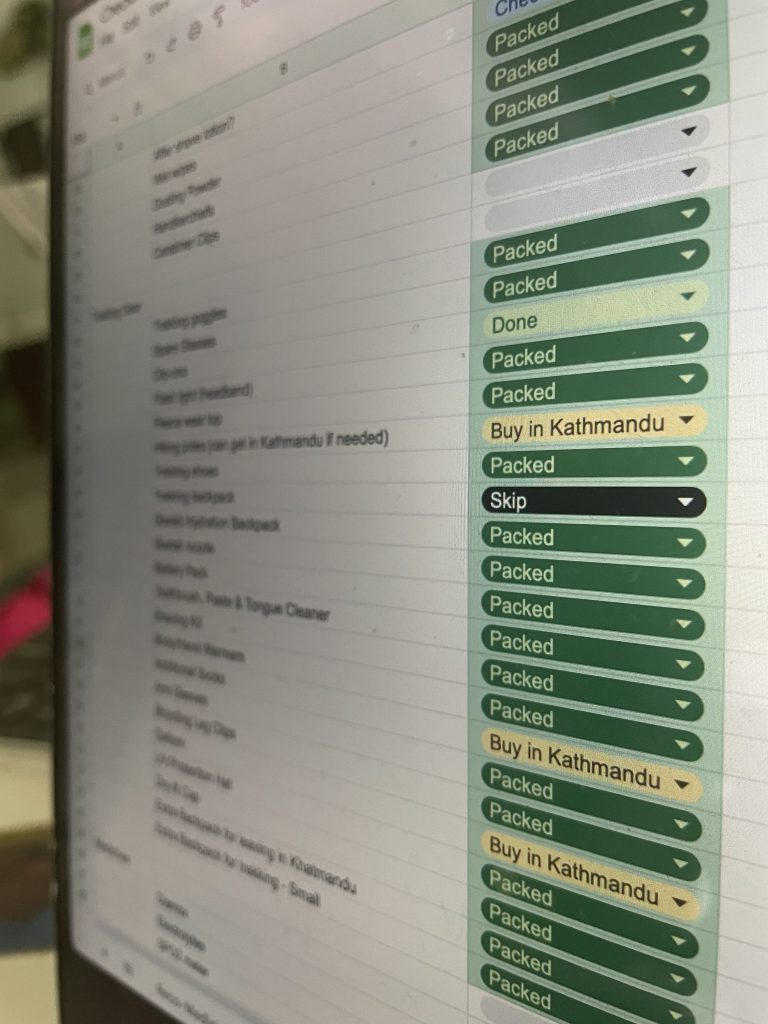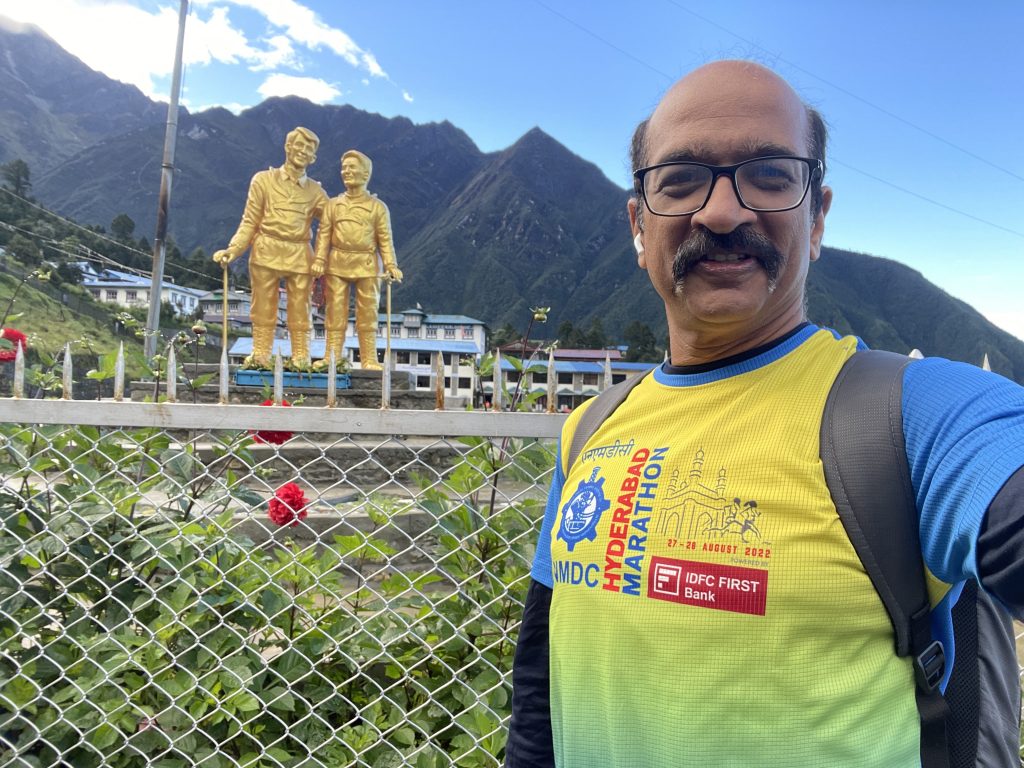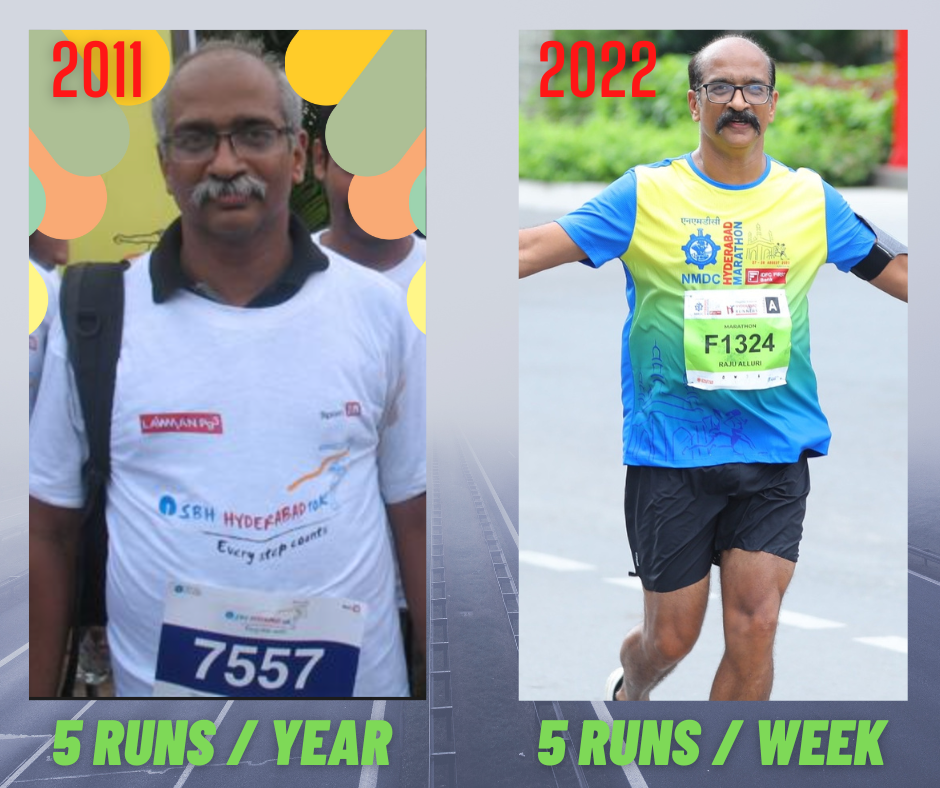Our actual GokyoRi Trek started on second day, after we reached Lukla from Kathmandu by flight. Then we are set off for the first day of our trek to Phakding.
We are set to reach Kathmandu airport by 6am for an early departure to Lukla. So we are ready to start at the hotel lobby by 5:00am, with coffee and packed breakfast in our hands. There was a bit of reshuffling of the luggage and some part of our luggage is kept with concierge of the hotel to pickup during our return trip.

Being a first timer, I had to make an educated (based on suggestions from group members and based on my own personal choices of gear) guess on what I can leave behind in Kathmandu. I got almost everything right, but I went wrong with one rain protection gear. More details in a relevant post later.
The checkin at Khatmandu is very fast, given that there are hardly many travellers. Our group of trekkers are split into two small planes.

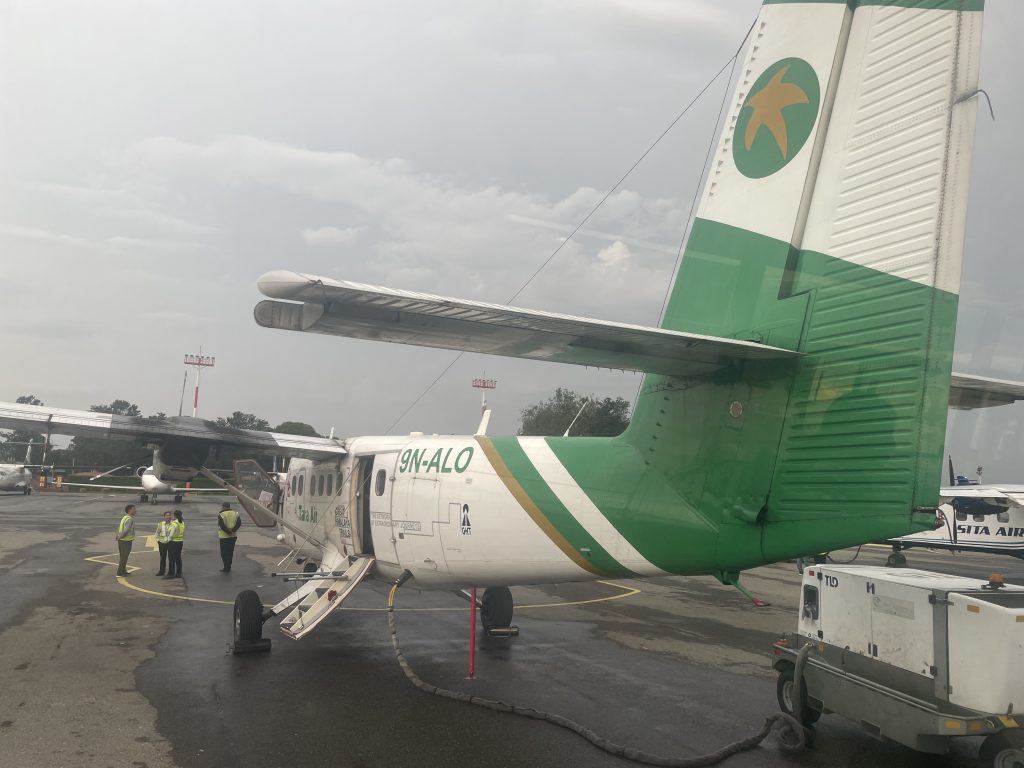
The crammed plane and noisy flight initially looked unmanageable, but the views of the cliffs and valleys down below offered an amazing experience and by the time our flight came to end, we still wanted for more of those mesmerising arial views.
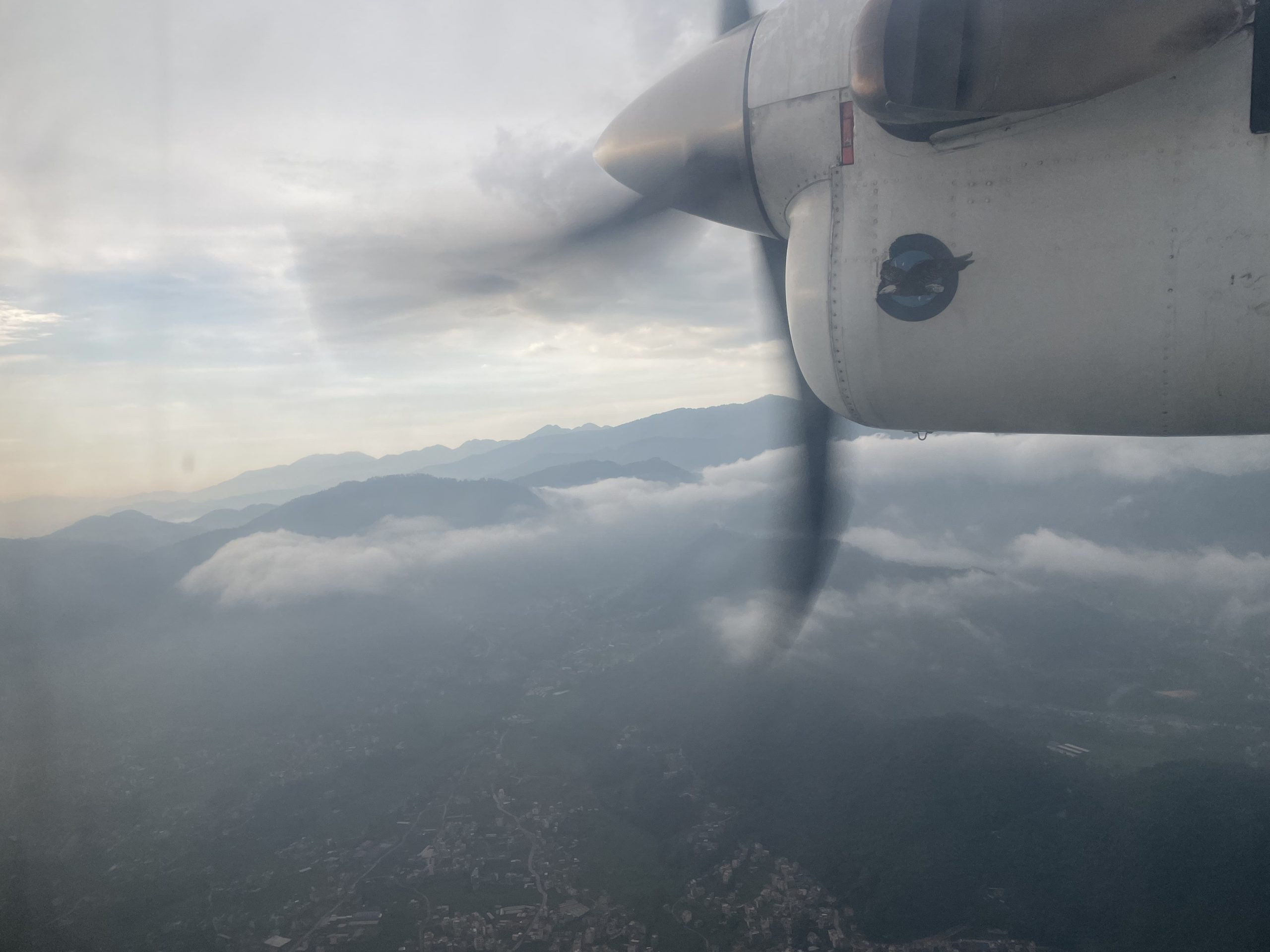
Landing at Lukla airport is one unforgettable experience. The short runway looked so scary, but I reassured myself that landing here is just another daily affair for these experienced pilots. This thought process made the landing a thrilling experience rather than a scary one. The approach descent (or lack of one) to the airport, the fast arriving landing strip and the shortest run on the runway after touchdown – all these pass by within a blink, but leave a long lasting impression.
Once we landed, we gathered at a nearby teahouse. While enjoying the warm tea, I sought guidance from fellow experienced trekkers to make my gear ready: What to pack in backpack, filling my hydration pack (for the first time) and adjusting my sticks to proper length.
While we waited for some of our luggage that came on the next flight, I did my first sorting of carry-on versus porter/yak carried luggage. In retrospection, I got almost everything wrong but I learnt this art fast enough – within a day or two.
The wait also helped us click a few pictures with an amazing backdrop of that colourful village, tall mountains and blue skies.

We started our trek which is primarily a good descent to start with. The day is super sunny and the breeze is comfortable. Berry picking (and eating) on the way is a good pastime.
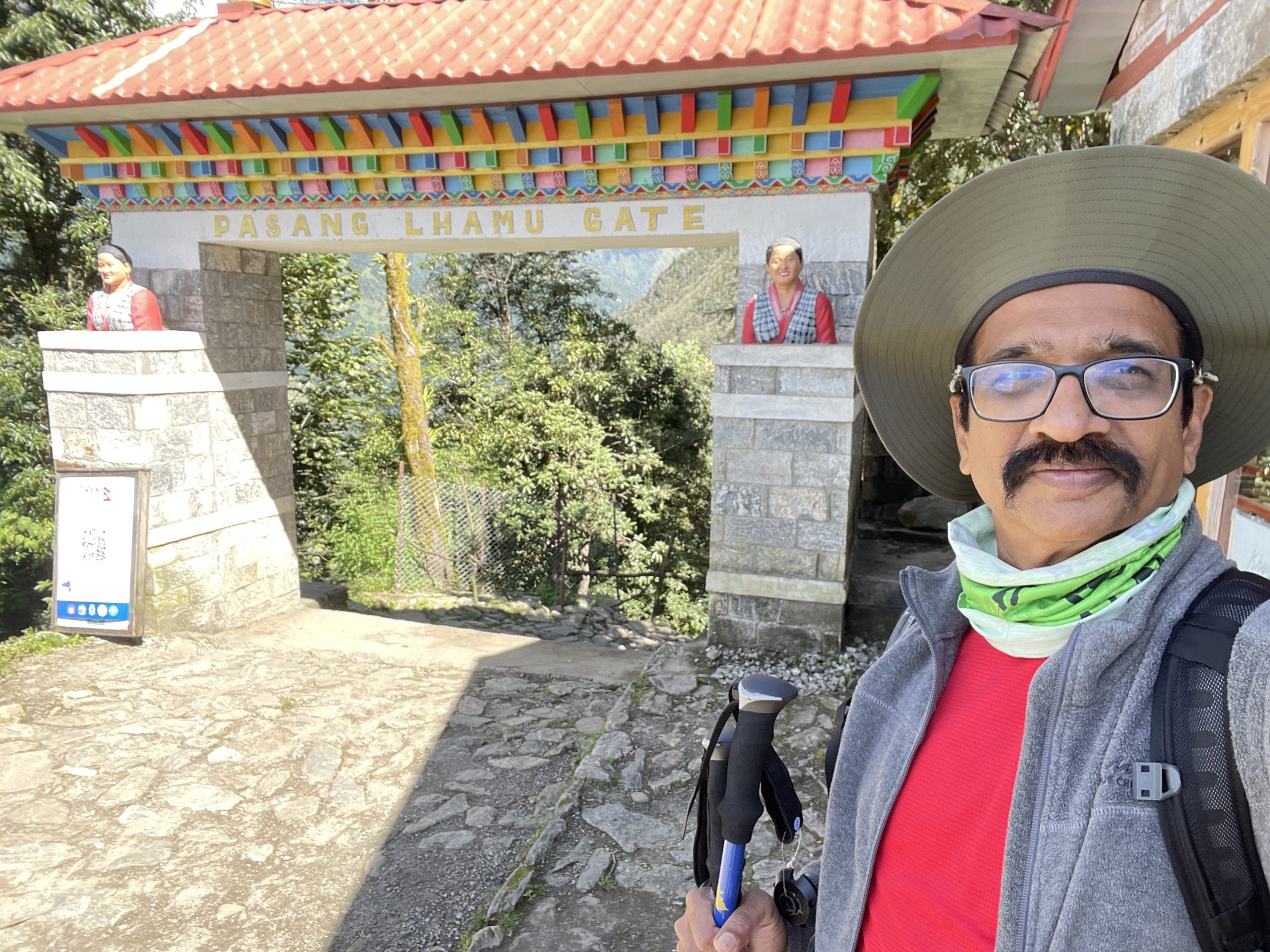
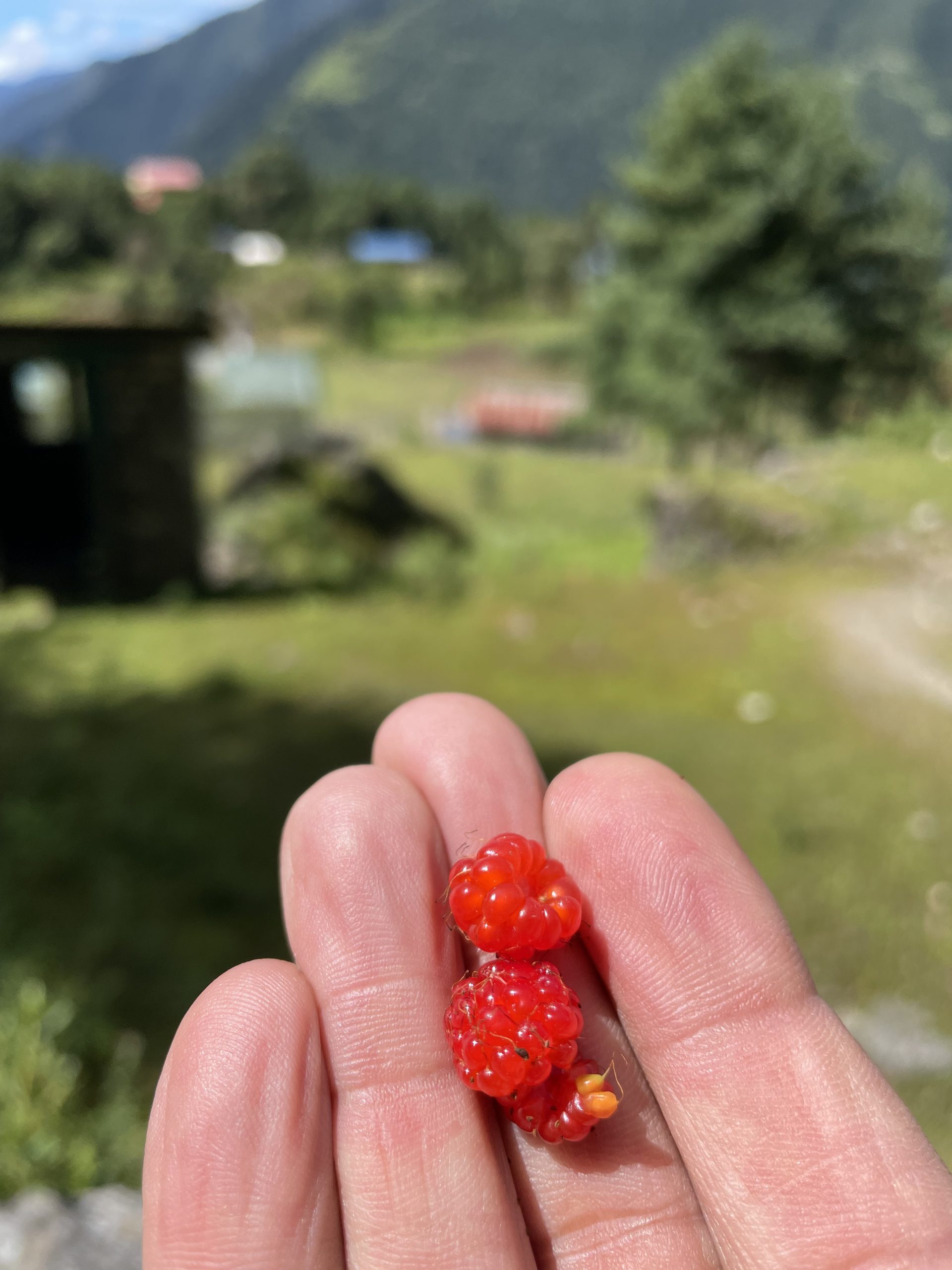
After a brief lunch break and rest at Wind Horse Lodge & Restaurant, we continued our trek towards Phakding. The following video is our pre-lunch trek map.
We encountered our first of these iconic suspension footbridges on our way to Phakding. During the coming days, these suspension bridges have become very common while we crisscrossed over the valleys to reach from one mountain to the other. Most bridges either have deep valleys or rushing waters of Doodhkoshi river beneath, offering soothing breezes and mesmerising views.
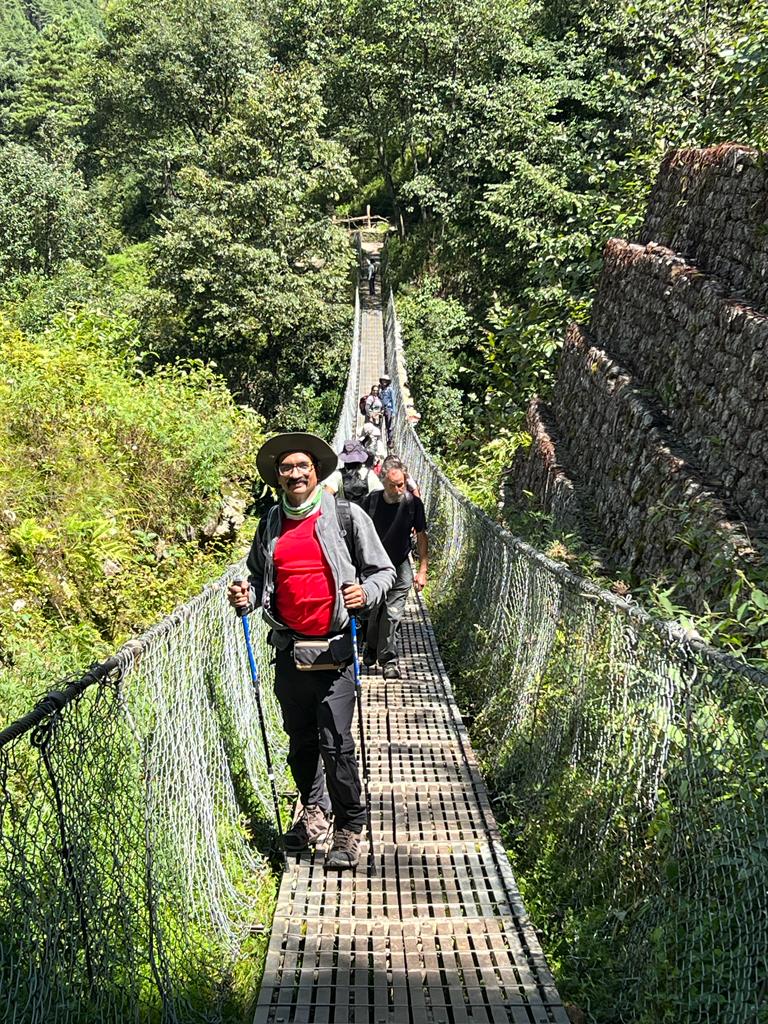
By late afternoon, we reached Mountain Lodges of Nepal at Phakding, our overnight stay. The wooden cabins at this place are amazing. The restaurant overseeing Doodhkhoshi is elegant and the service is extraordinary. After a few stretches and a brief shower, we circled back at the restaurant and spent long hours of tea time. This is followed by a well served dinner.
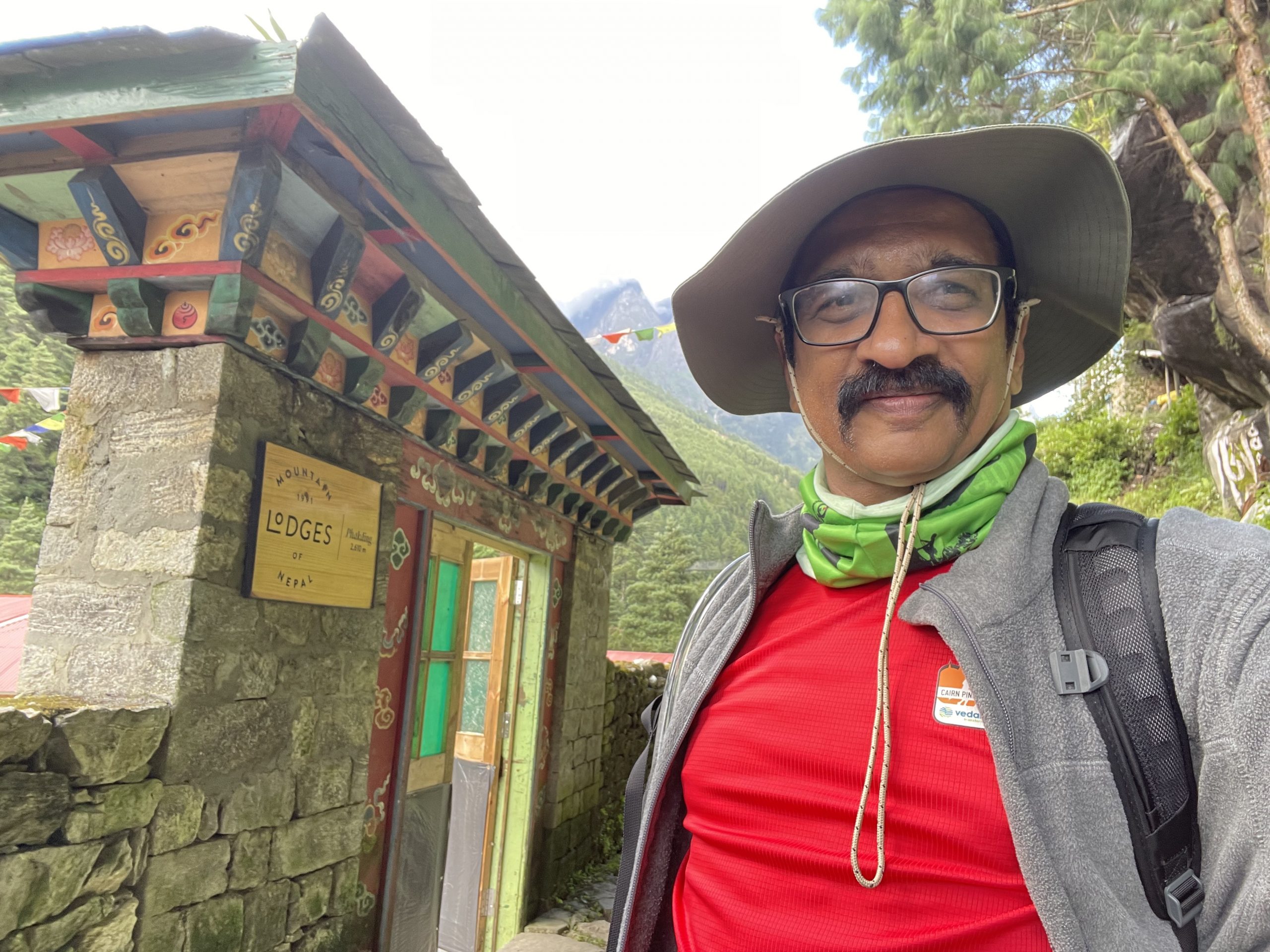
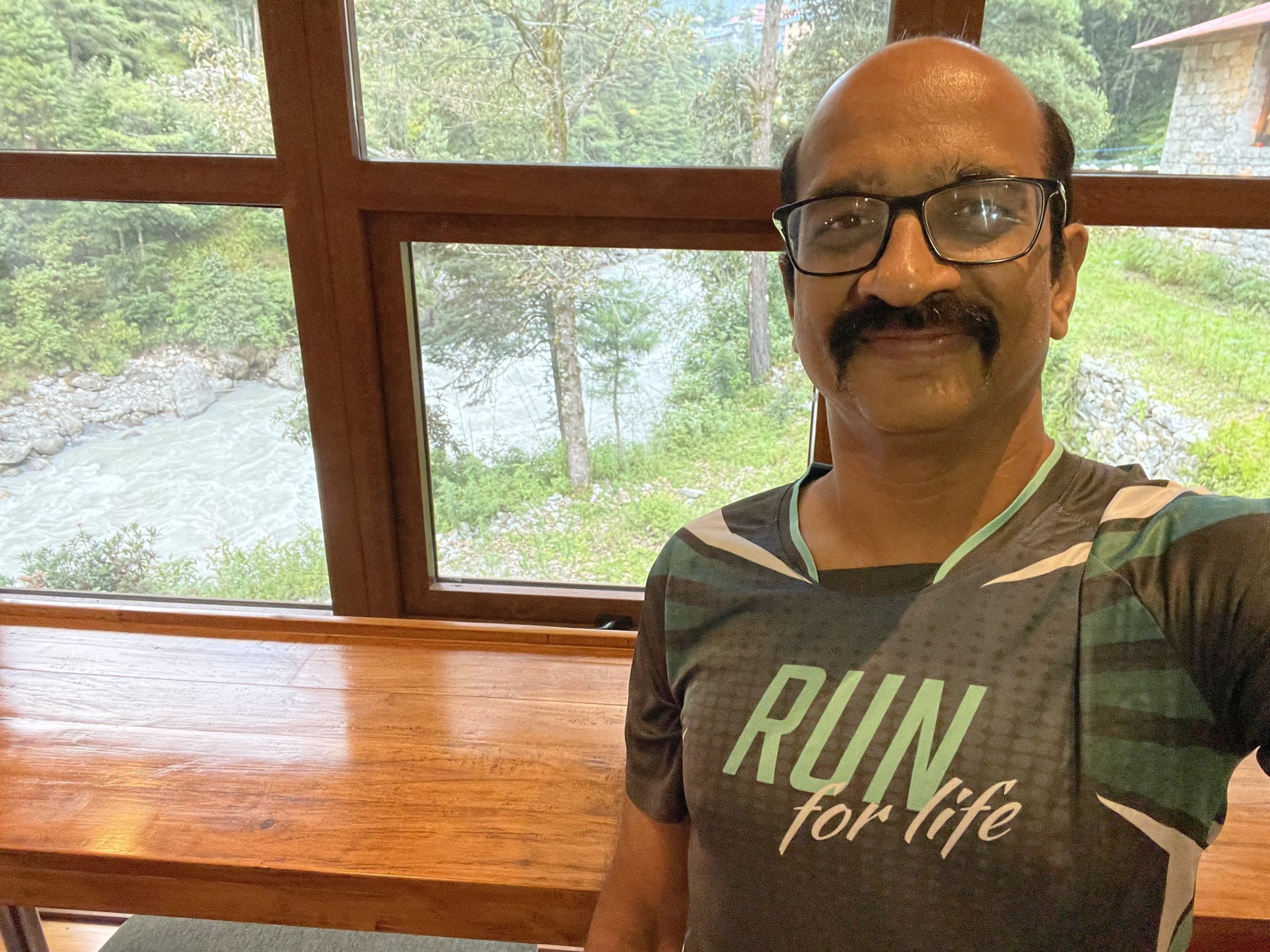

The day went well, but not without any hiccups. The first thing is that I am overdressed for the weather, wearing thicker outfits (and more layers) than needed for the weather. That made me sweat quite a bit and lose lot of body fluids and salts.
The second key thing is my landing of feet while we descend. By the end of the day, my ankles and calf muscles are too tired due to harsh landing on steps. I experienced mild cramps for a few minutes in the evening, mended by drinking good amount of water and local ginger/lemon tea. These cramps helped me refine my hydration strategy for the rest of the trip (make full use of the hydration pack) and adjust my landing while descending.
Here is the video of the post-lunch part of the day’s trek.
It is a well begun and well done day to the multi-day trek.
